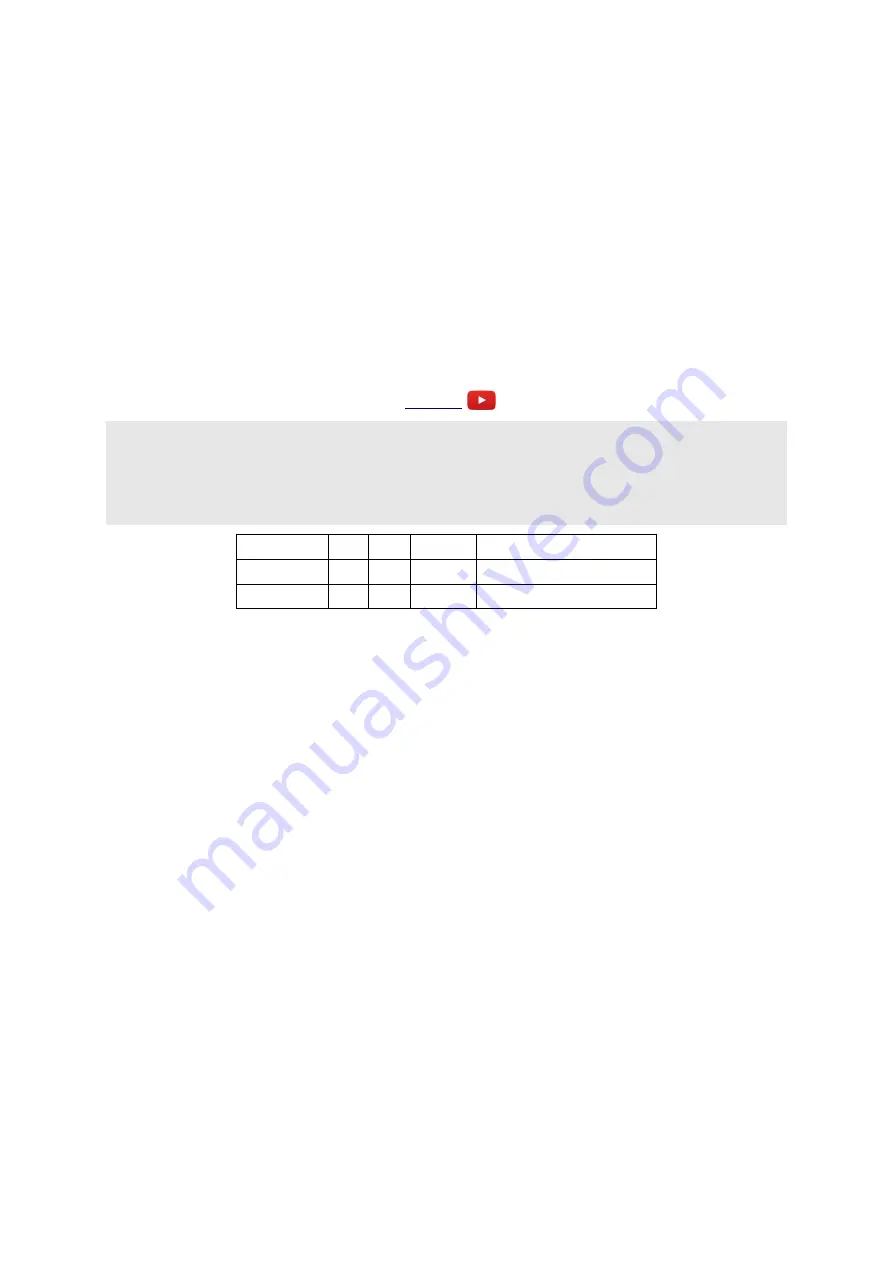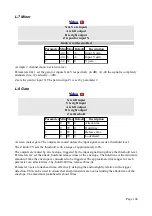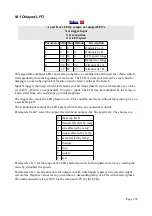
table. Parameter 1 offsets the Y CV, effectively providing a means of manual wave selection.
The Z knob/CV sets a scale factor which is applied to the cycle time. The scale is an integer (whole
number) which either multiplies or divides the frequency, and ranges in value from 1-16.
When Z changes, the scale is shown on the display. If the value shown is negative, it is a divisor
rather than a multiplier. Note that there is no value of "-1" since dividing by 1 and multiplying by 1
are the same.
Outputs A & B are the result of the wavetable lookup. Each output has its own attenuverter on
parameters 2 & 3 respectively.
Parameter 4 applies a multiplier to the LFO time, according to the table in the Clockable
Delay/Echo section, above.
K-3 Wavetable Waveshaper
X is signal input
Y is wavetable input
Z is gain
A is wavetable output
B is complementary wavetable output
Parameter Min Max Default
Description
0
0
99
0
Chooses the wavetable.
1
-32 32
0
Y Offset.
Applied to audio, this algorithm is a wavetable-based waveshaper effect. More generally,
considering the input as a CV lookup, this algorithm provides a wavetable-based transfer function.
See 'Loading wavetables' above for a description of how to load wavetables onto the SD card.
X is the input audio or CV. The range ±5V spans the full waveform.
Z applies a gain to X, with a range from 1x to approximately 16x.
The Y input controls the lookup point in the wavetable, with a range of ±5V covering the whole
table. Parameter 1 offsets the Y CV, effectively providing a means of manual wave selection.
Output A is the main output of the wavetable lookup. Output B is the same but using an inverted Y
i.e. when A is using the first wave in the table, B will be using the last and
vice versa
.
K-4 Clockable Wavetable Envelope
Page 93
















































